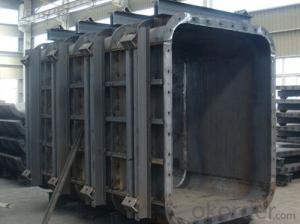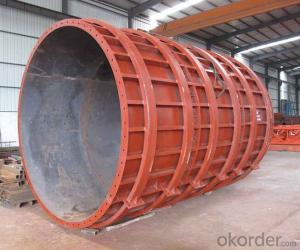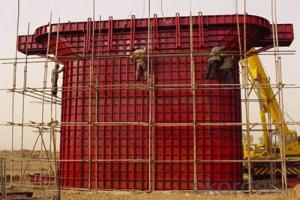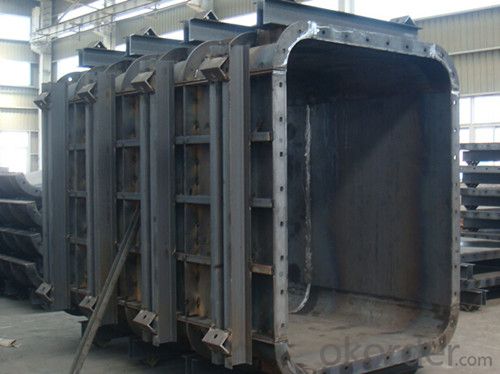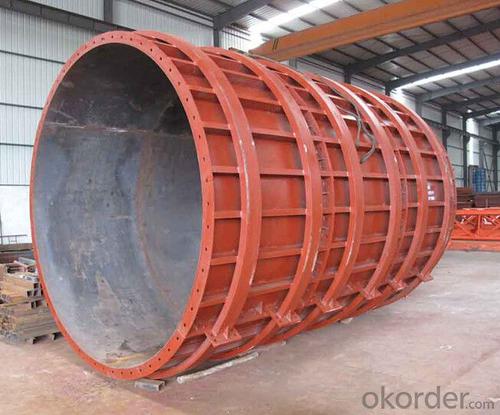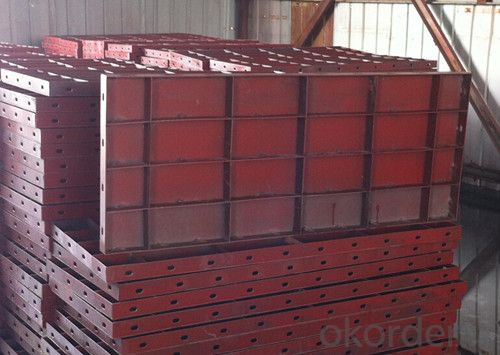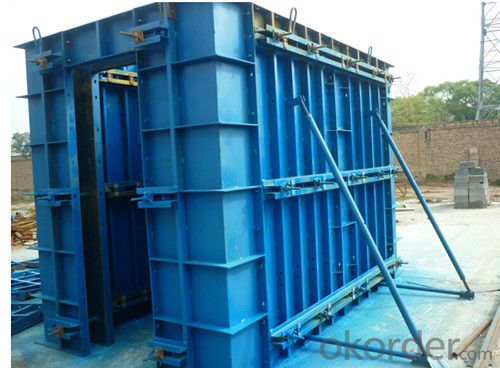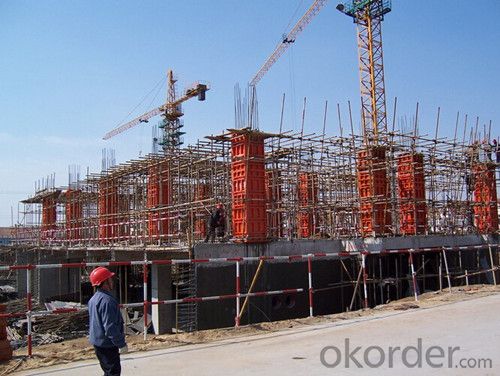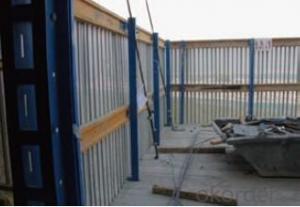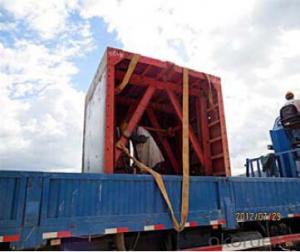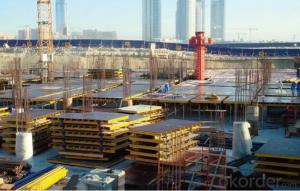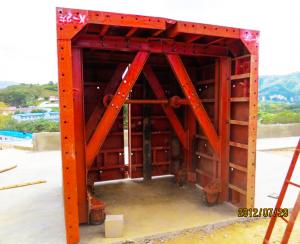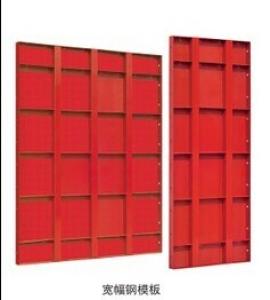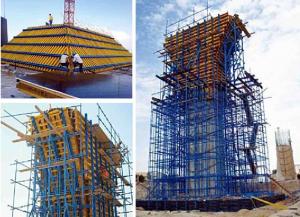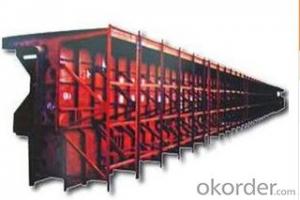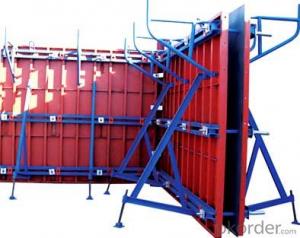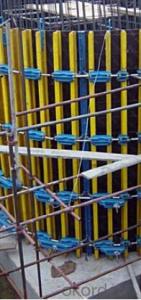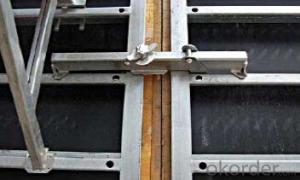Steel Formwork for Water Conservancy and Hydropower
- Loading Port:
- Tianjin
- Payment Terms:
- TT OR LC
- Min Order Qty:
- 100 pc
- Supply Capability:
- 100000 pc/month
OKorder Service Pledge
OKorder Financial Service
You Might Also Like
Introduction for Steel Formwork :
Steel Formwork:used in highway,railway,bridge,tunnel and shearing wall,etc.Our company CNBM which is one of the largest State-Owned Enterprises in China which established in 1984 , has gained the confirmation from the specialist of China Architecture Scence Institute, and has been used by many building operation units and has been highly praised.In 2014, the total turnover volume of CNBM exceeds US$410 billion dollars with a total staff of 180,000. CNBM is listed in the World Top 500 Enterprises !
Characteristic for Wholly Steel Formwork :
1. High Smooth Surface
2. Convex ling for Edge Rib
3. Specialized Connection Pin for Edge Rib Connection
4. High Stiffness for Steel Surface
5. Light Weight for saving producing cost
6. Fast Separate and Easy transport
7. Recycling using
8. Scientific and Reasonable design to meet different working condition
Parameter and Specification :
Code | Size (mm) | Weight (KG) | Code | Size (mm) | Weight (KG) |
P12021 | 1200*2100*55 | 102.96 | P4018 | 400*1800*55 | 28.3 |
P12018 | 1200*1800*55 | 88.4 | P4015 | 400*1500*55 | 23.8 |
P12015 | 1200*1500*55 | 74.15 | P4012 | 400*1200*55 | 19.1 |
P12012 | 1200*1200*55 | 60.11 | P4009 | 400*900*55 | 14.6 |
P10018 | 1000*1800*55 | 76.01 | P4007 | 400*750*55 | 12.3 |
P10015 | 1000*1500*55 | 63.96 | P4006 | 400*600*55 | 9.95 |
P10012 | 1000*1200*55 | 60.11 | P3018 | 300*1800*55 | 20.7 |
P10009 | 1000*900*55 | 39.32 | P3015 | 300*1500*55 | 17.4 |
P9018 | 900*1800*55 | 70.89 | P3012 | 300*1200*55 | 14 |
P9015 | 900*1500*55 | 59.47 | P3009 | 300*900*55 | 10.7 |
P9012 | 900*1200*55 | 48.03 | P3007 | 300*750*55 | 8.8 |
P7518 | 750*1800*55 | 57.8 | P3006 | 300*600*55 | 7.3 |
P7515 | 750*1500*55 | 48.47 | P3004 | 300*400*55 | 5.46 |
P7512 | 750*1200*55 | 39.16 | P2515 | 250*1500*55 | 15.17 |
P7509 | 750*900*55 | 29.85 | P2512 | 250*1200*55 | 12.24 |
P7507 | 750*750*55 | 24.81 | P2509 | 250*900*55 | 9.32 |
P6018 | 600*1800*55 | 43.1 | P2507 | 250*750*55 | 7.71 |
P6015 | 600*1500*55 | 36.3 | P2506 | 250*600*55 | 6.39 |
P6012 | 600*1200*55 | 31.7 | P2015 | 200*1500*55 | 11.6 |
P6009 | 600*900*55 | 23.9 | P2012 | 200*1200*55 | 9.4 |
P6007 | 600*750*55 | 18.55 | P2009 | 200*900*55 | 7.1 |
P6006 | 600*600*55 | 16.25 | P2007 | 200*750*55 | 5.9 |
P5018 | 500*1800*55 | 36.27 | P2006 | 200*600*55 | 6.39 |
P5015 | 500*1500*55 | 30.15 | P2004 | 200*450*55 | 3.64 |
P5012 | 500*1200*55 | 25.55 | P1515 | 150*1500*55 | 9.5 |
P5009 | 500*900*55 | 20.38 | P1506 | 150*600*55 | 4 |
P5007 | 500*750*55 | 15.48 | P1504 | 150*450*55 | 2.98 |
P5006 | 500*600*55 | 13.58 | P1015 | 100*1500*55 | 7.5 |
Code | Size (mm) | Weight (KG) |
P1012 | 100*1200*55 | 6.9 |
P1009 | 100*900*55 | 4.6 |
P1007 | 100*750*55 | 3.8 |
P1006 | 100*600*55 | 3.1 |
P1004 | 100*450*55 | 2.33 |
E1515 | 150*150*1500 | 15.2 |
E1512 | 150*150*1200 | 12.26 |
E1509 | 150*150*900 | 9.34 |
E1507 | 150*150*750 | 7.77 |
E1506 | 150*150*600 | 6.46 |
E1504 | 150*150*450 | 4.87 |
E1015 | 100*150*1500 | 13.13 |
E1012 | 100*150*1200 | 10.61 |
E1009 | 100*150*900 | 8.07 |
E1006 | 100*150*600 | 5.44 |
Y1018 | 100*150*1800 | 14.56 |
Y1015 | 100*150*1500 | 12.29 |
Y1012 | 100*150*1200 | 9.72 |
Y1009 | 100*150*900 | 7.46 |
Y1007 | 100*150*700 | 6.19 |
Y1006 | 100*150*600 | 5.19 |
Y1004 | 100*150*450 | 3.92 |
J0018 | 50*50*1800 | 4.34 |
J0015 | 50*50*1500 | 3.7 |
J0012 | 50*50*1200 | 2.94 |
J0009 | 50*50*900 | 2.3 |
J0007 | 50*50*750 | 1.9 |
J0006 | 50*50*600 | 1.5 |
J0004 | 50*50*450 | 1.13 |
FAQ :
1. Who are we ?
We , CNBM , are a State-Owned Enterprise which established in 1984 , have 32 years experience ,enjoy high reputation .
2. Our Advantage :
Customized products , we have our own R&D department , we can design the drawing and suggest the suitable solution for your project .
3. Our after-Sales Service :
The international Sales Manager and Engineer can go to your job site for work direction and help you deal with your project .
Factory Photos :
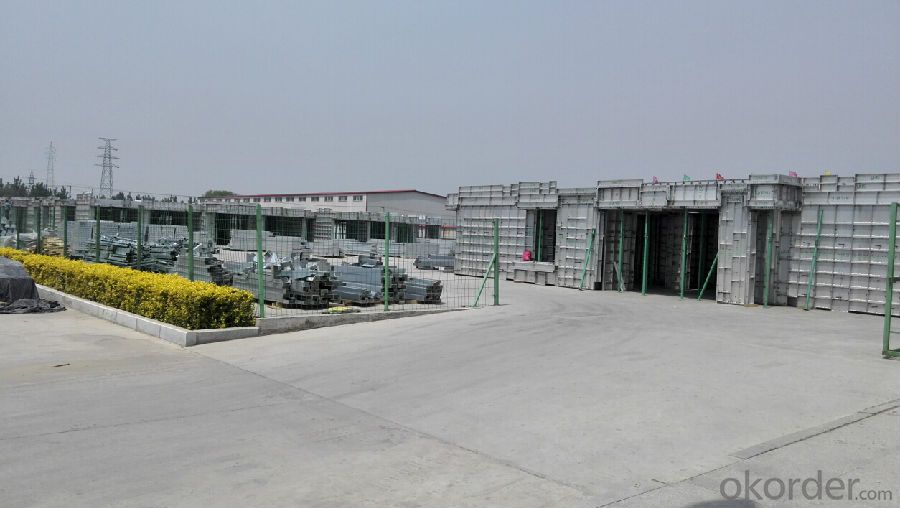
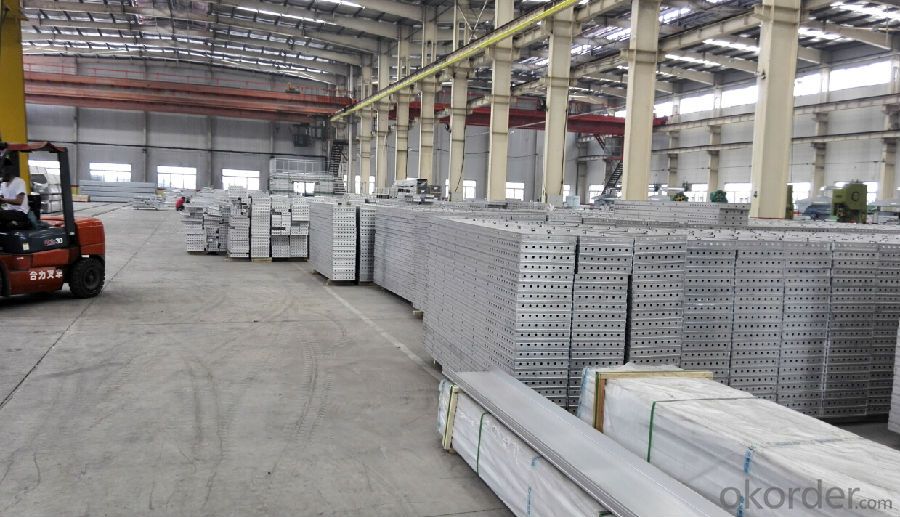
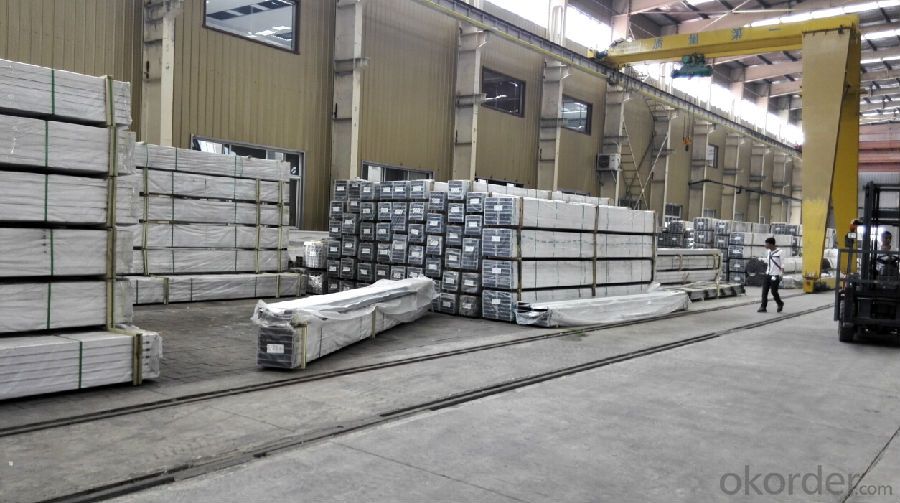
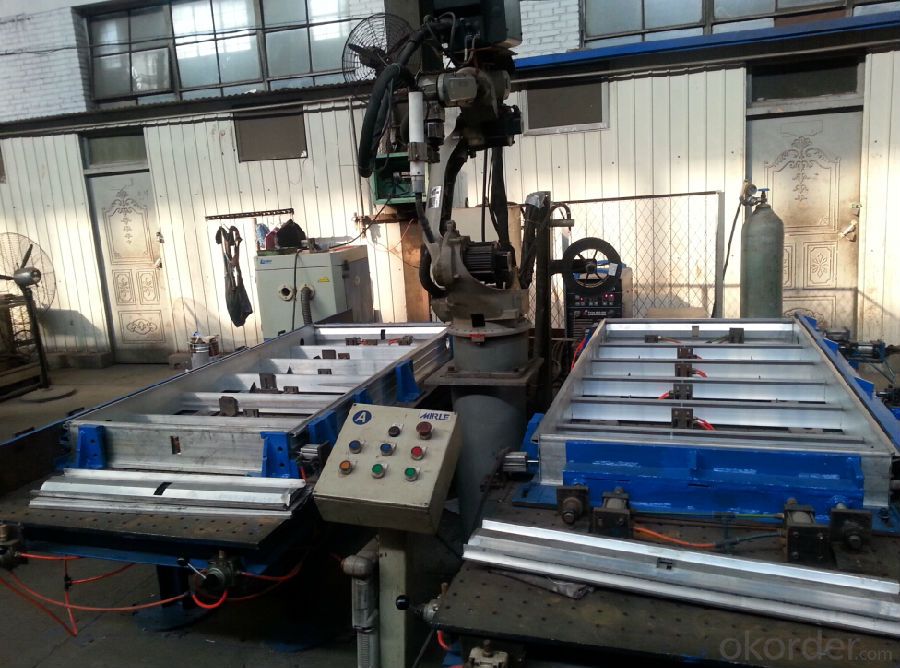
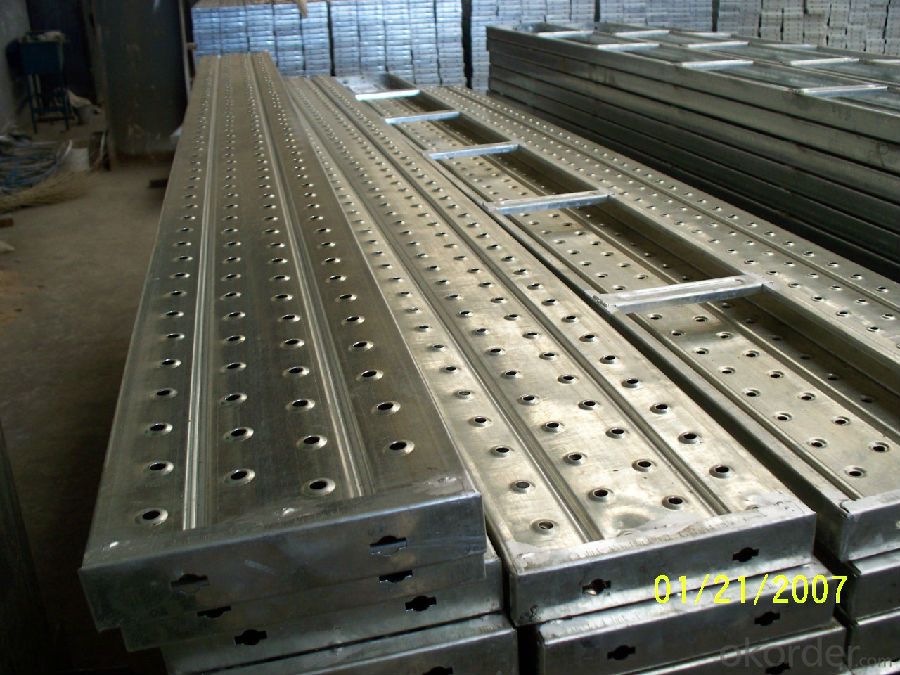
- Q: How does steel formwork affect the overall project cost estimation?
- Steel formwork can have a significant impact on the overall project cost estimation. While steel formwork may have a higher initial cost compared to other formwork materials such as timber or plywood, it offers several advantages that can lead to cost savings in the long run. Firstly, steel formwork is highly durable and can be reused multiple times. Unlike timber or plywood formwork, which may need to be replaced after a few uses, steel formwork can withstand a large number of cycles, reducing the need for frequent replacements. This not only saves material costs but also reduces labor and time required for formwork installation and removal. Additionally, steel formwork provides better quality finishes, resulting in reduced requirement for surface treatments or plastering. This saves both material and labor costs associated with finishing work. Moreover, steel formwork offers greater precision and dimensional accuracy, resulting in reduced need for rework or adjustments during construction. This helps to minimize material wastage and saves time and labor costs. Furthermore, steel formwork is highly resistant to moisture and weathering, which means it can be used in various weather conditions without compromising its structural integrity. This flexibility allows for more efficient construction scheduling, reducing downtime and potential cost overruns. Lastly, steel formwork can support greater concrete pouring heights and pressures, allowing for faster construction and increased productivity. This can result in accelerated project timelines and reduced labor costs. In summary, while steel formwork may have a higher initial cost, its durability, reusability, improved finishes, precision, resistance to weathering, and ability to support larger concrete pours can lead to significant cost savings in terms of material, labor, and time. Therefore, steel formwork positively impacts the overall project cost estimation.
- Q: Are there any specific maintenance requirements for steel formwork?
- Yes, steel formwork requires regular maintenance to ensure its durability and optimal performance. Some specific maintenance requirements for steel formwork include cleaning, removing concrete residue, inspecting for any signs of damage or corrosion, and applying protective coatings to prevent rust. Additionally, proper storage and handling practices should be followed to prevent any deformation or bending of the steel formwork components.
- Q: What type of concrete finishes can be achieved with steel formwork?
- Steel formwork offers a multitude of possibilities for achieving various concrete finishes. A popular choice is a smooth and level surface, which can be accomplished by using steel formwork with a sleek texture. This finish is well-suited for areas that necessitate an even and flat surface, such as floors and walls. Another option is to achieve a textured or patterned surface using steel formwork. This can be done by utilizing formwork with a textured or patterned surface itself, or by incorporating additional materials like rubber or plastic liners to create the desired texture or pattern. This finish is often employed for decorative purposes, such as architectural concrete elements or exposed aggregate finishes. Furthermore, steel formwork allows for the creation of curved or shaped concrete surfaces. This involves bending or shaping the formwork prior to pouring the concrete, resulting in unique and visually pleasing shapes. This type of finish is commonly used in architectural or artistic applications. Ultimately, steel formwork provides a versatile solution for achieving a diverse range of concrete finishes, including smooth, textured, patterned, and curved surfaces. The choice of finish depends on the specific requirements and desired aesthetics of the project.
- Q: How does steel formwork handle different concrete reinforcement spacing?
- Steel formwork is a versatile and robust solution that can easily handle different concrete reinforcement spacing. The formwork itself consists of steel panels or frames that are designed to be adjustable and flexible, allowing for customization according to the specific reinforcement spacing required for a particular concrete structure. Steel formwork panels have various features that make them suitable for accommodating different reinforcement spacing. These panels are typically available in different sizes and shapes, allowing for easy adjustment to fit the desired spacing. Additionally, the panels are usually equipped with adjustable clamps or connectors that enable them to be securely joined together, providing stability and support for the concrete. When it comes to concrete reinforcement spacing, steel formwork can be adapted to meet the specific requirements. The steel panels can be easily positioned and aligned to create the desired spacing for the reinforcement bars. This can be achieved by adjusting the panels horizontally or vertically to accommodate the required distance between the bars. Furthermore, steel formwork provides the necessary strength and durability to withstand the pressure exerted by the concrete during the pouring and curing process. This ensures that the formwork remains intact and stable, even when dealing with different reinforcement spacing. In conclusion, steel formwork is well-equipped to handle different concrete reinforcement spacing. Its adjustable and flexible design allows for customization to fit the specific requirements of each project. The strength and durability of steel formwork ensure that it can effectively support the concrete and maintain its stability throughout the construction process.
- Q: How does steel formwork affect the overall project cost?
- Steel formwork can affect the overall project cost in a few ways. Firstly, steel formwork tends to have a higher initial cost compared to other types of formwork materials such as timber or plastic. However, this cost can be offset by the fact that steel formwork is more durable and reusable, resulting in lower long-term costs for future projects. Additionally, steel formwork offers greater precision and stability, which can lead to faster construction times and reduced labor costs. Overall, while the initial investment may be higher, steel formwork can contribute to overall cost savings and improved project efficiency in the long run.
- Q: How does steel formwork handle surface imperfections in concrete?
- Construction projects commonly utilize steel formwork to create temporary molds for pouring concrete. One of the benefits of steel formwork is its effective handling of surface imperfections in concrete. The precise and controlled placement of concrete is facilitated by the smooth and rigid nature of steel formwork, which minimizes the occurrence of surface imperfections. Unlike wood or plywood, steel formwork does not flex or warp, ensuring consistent surface finishes. When surface imperfections do arise, steel formwork provides a solid foundation to address these issues. The strength and durability of steel enable it to withstand the pressure exerted by the concrete, preventing bulges or deformations that could result in surface imperfections. Moreover, steel formwork can easily be adjusted or modified to accommodate any irregularities or unevenness in the concrete. This flexibility allows for the correction of minor imperfections during the pouring process, resulting in a smoother and more even surface finish. Furthermore, steel formwork can be treated or coated to prevent sticking or bonding between the concrete and the formwork. This coating reduces the likelihood of surface imperfections caused by the concrete adhering to the formwork. In conclusion, steel formwork is a dependable and efficient solution for dealing with surface imperfections in concrete. Its strength, rigidity, and versatility enable construction professionals to achieve high-quality finishes, even in challenging conditions.
- Q: What is the expected lifespan of steel formwork ties?
- Several factors, including the quality of the steel, usage conditions, and maintenance, can influence the lifespan of steel formwork ties. Generally, these ties are designed to have a long lifespan and can be reused multiple times. When high-quality steel formwork ties are used in appropriate conditions and properly maintained, they can endure for several years. By regularly cleaning, inspecting, and maintaining them, they can be reused for multiple construction projects, thereby reducing costs and waste. It is essential to note that steel formwork ties may deteriorate over time, especially when exposed to harsh environmental conditions or corrosive substances. Therefore, it is crucial to regularly inspect the ties for any signs of damage or corrosion and replace them if necessary. Additionally, proper storage and handling of the ties when not in use can also contribute to extending their lifespan. In conclusion, the lifespan of steel formwork ties is not fixed, but with proper maintenance and care, they can last for several years and be reused multiple times. This makes them a cost-effective and sustainable choice for construction projects.
- Q: How does steel formwork affect the overall construction site organization?
- Steel formwork can greatly impact the overall organization of a construction site in several ways. Firstly, steel formwork is known for its durability and strength, allowing for faster and more efficient construction processes. This means that construction timelines can be significantly reduced, leading to better project management and improved site organization. Additionally, steel formwork systems are reusable, reducing waste and minimizing the need for additional materials and resources. This not only helps in streamlining the construction process but also contributes to a cleaner and more organized site. Furthermore, steel formwork offers flexibility in design and can be customized to fit various project requirements, enabling efficient utilization of space and better coordination among different construction activities. Overall, the use of steel formwork positively influences the overall construction site organization by enhancing productivity, reducing waste, and promoting better project coordination.
- Q: Can steel formwork be used for tunnel linings?
- Yes, steel formwork can be used for tunnel linings. Steel formwork is a versatile and durable solution that can be customized to fit the specific requirements of tunnel construction. It provides a strong and rigid structure, capable of withstanding the pressures and forces exerted by the surrounding ground and any potential water ingress. Steel formwork also offers the advantage of being reusable, making it a cost-effective option for tunnel linings. Additionally, steel formwork can be easily assembled and disassembled, allowing for efficient and timely construction of tunnel linings.
- Q: Can steel formwork be customized to meet specific project requirements?
- Yes, steel formwork can be customized to meet specific project requirements. Steel formwork is a versatile and flexible construction material that can be easily modified and adjusted to fit different shapes, sizes, and dimensions. It can be cut, welded, and reshaped to match the specific requirements of a project. Additionally, steel formwork allows for the creation of complex and intricate structures, making it suitable for a wide range of construction projects. The customization of steel formwork enables builders and contractors to achieve precise and accurate results, ensuring that the final structure meets the desired specifications and design requirements.
Send your message to us
Steel Formwork for Water Conservancy and Hydropower
- Loading Port:
- Tianjin
- Payment Terms:
- TT OR LC
- Min Order Qty:
- 100 pc
- Supply Capability:
- 100000 pc/month
OKorder Service Pledge
OKorder Financial Service
Similar products
Hot products
Hot Searches
